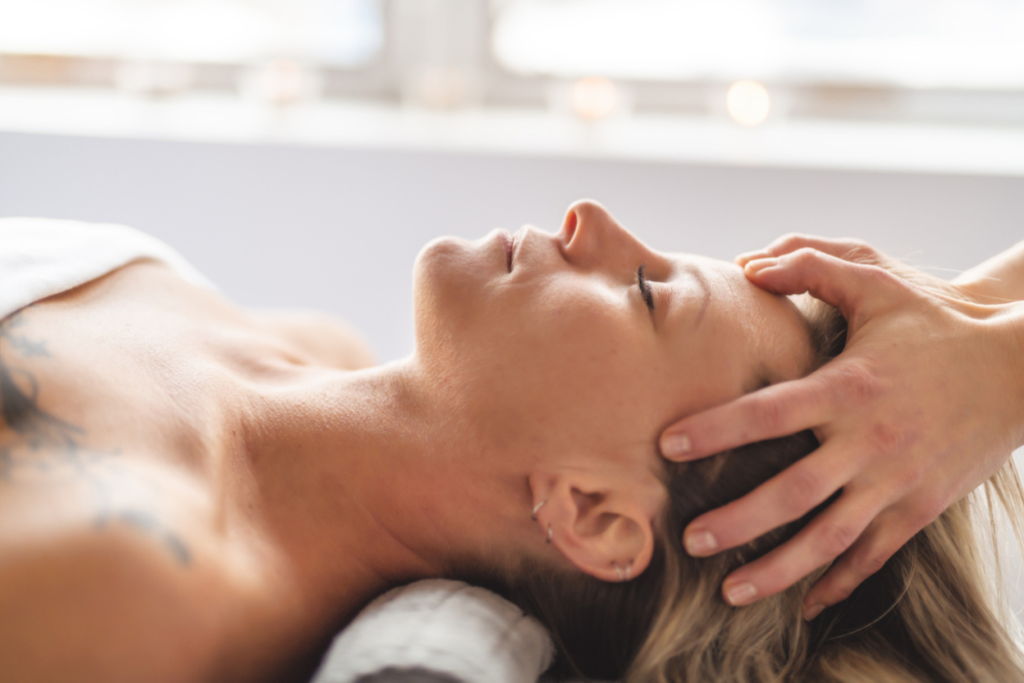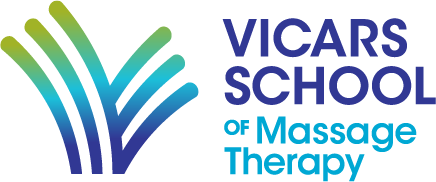For many of us, physical aches and pains are the trigger for making an appointment for massage. We know that massage therapy can speed our recovery from injury, and even help us live better with chronic pain.
But did you know that massage can also help with the pain of living with depression, anxiety, trauma, or stress?
Tessa Burns, a clinical psychologist and owner of Serenity Now Wellness in Calgary, uses an approach in her practice called integrated body psychotherapy. Simply put, it’s about how the mind and body are interconnected. That approach evolved into Serenity Now Wellness, an integrated therapeutic centre comprising counseling and physical therapies such as acupuncture, nutrition, naturopathy, and massage. The RMT on staff, Laura Dunlop, is a graduate of Vicars School of Massage Therapy.
Tessa says that in counseling, sometimes a roadblock can happen when a patient is delving into stress or trauma. The feedback between brain and body manifests itself physiologically.
“The patient will be holding their shoulders tight and stiff, for example, because the body is reacting to their brain telling them it isn’t safe,” says Tessa.
Helping patients relax helps with receptivity in counseling. She’s also found that when the body is physically manipulated, as with massage therapy, patients can get a more profound result from counseling and feel the benefits more wholistically.
“A lot of the work that we do will be very challenging and there will be a natural tension when you are doing really emotional work.”
In her practice, she encourages patients to have a massage after a counseling session, to help relieve that tension.
She cites books by physician Gabor Mate and the late neuroscientist and pharmacologist Candace Pert as excellent sources for research and experiences in mind-body connections.
As a graduate student in 1972, Dr. Pert discovered the brain’s opiate receptor – the cellular site where the body’s painkillers and “bliss-makers,” the endorphins – bond with cells to weave their magic. Her discovery led to a revolution in neuroscience, helping open the door to the “information-based” model of the brain which is now replacing the old “structuralist” model.
While there are centres specializing in physical health that will bring in counselors on occasion to help patients, Tessa approaches things from the other direction.
“Because I’m a psychologist I see everything from the mental health lens,” she says. “I focus on the benefits of touch therapy because I want to address the physical aspect of mental health.”
The mechanisms and effects of massage therapy are not yet as well researched as those of other disciplines, such as physical therapy, have been. Victoria-based writer, educator, and consultant Eric Purves is trying to address that. With years of experience as an RMT and with a master’s degree in rehabilitation medicine, Eric’s specialty is the biopsychosocial science of pain in massage therapy, where the emphasis is on facilitating and supporting a person rather than “curing” their disorder.
His focus over the past decade is contributing to and synthesizing the massage therapy research that does exist and incorporating it into massage therapy practice. He translates research evidence into practical applications through workshops, courses, and seminars intended for professionals who treat people with touch or movement techniques.
When it comes to massage therapy’s benefits, research by such leaders as Dr. Tiffany Field, who founded the Touch Research Institute, validates that massage therapy can reduce certain types of pain, decrease anxiety and depression symptoms, and even promote weight gain in premature babies. But the specific biochemical and biomechanical reasons that this occurs remain elusive.
In a 2011 literature review of research on massage therapy’s effect on the stress hormone cortisol showed that there isn’t conclusive evidence that can link the two. Author Christopher Moyer of the University of Wisconsin has written that “…other causal mechanisms, which are still to be identified, must be responsible for massage therapy’s clinical benefits.”
But those benefits are real, and there’s research to back it up. An earlier paper by Dr. Moyer, published in The International Journal of Therapeutic Massage and Bodywork, notes the parallels between the therapeutic alliance in massage and the private interpersonal contact between a psychotherapist and patient as an area for future research to explore. He wrote that the effects of massage therapy “on anxiety and depression, when quantified, are similar in magnitude to the effects observed in hundreds of psychotherapy studies.”
There’s evidence that the intangible aspects of getting a massage—the empathy, trust, and respect between client and therapist—have tangible benefits for the client’s mental health.
Eric Purves’ knowledge and experience confirms the importance of the therapeutic alliance, the positive relationship between client and clinician. He says it is one of two components important for the mental health benefits of massage and is the foundation of every successful massage treatment.
The second important component is person-centered care. In his former clinical practice and now in his workshops, Eric stresses the importance of listening to and validating a client’s concerns as the first step in person-centred care.
“We want to move the focus from treating a particular condition to treating the person who has the condition so that we are treating the whole person,” Eric says.
Eric has also found that that validation is often a transition point for clients. When clients feel that someone is listening to them and believing them, it helps them begin a journey towards living well.
“They are able to move from an ‘I’m trying to fix you’ to ‘I’m here to support you’ situation,” he says. “It makes a huge difference in helping them learn to manage their condition and live well with what they are experiencing.
“There is a lot of data that suggests that the person-centered care approach in massage therapy, particularly for people with chronic conditions, whether it’s mental health or a systemic disease or a pain problem, tends to work. And clients get better not because they are being fixed, but because they’re learning to live well with what they have.”
Eric joined Vicars School as a curriculum advisor in 2022. He has worked with Curriculum Director Linda McGeachy to help ensure the school continues to meet a high standards of educational excellence as required by national accreditation.
Students who train at Vicars follow an intensive two-year curriculum that incorporates knowledge and techniques addressing whole-body conditions. Part of that curriculum focuses on how to be part of an effective health team managing mental health conditions.
At the very start of the students’ first-year classes is an introduction to the different pathologies of the body, including the nervous system, musculoskeletal system, and mental health.
“The concepts in the pathology course are built on throughout the full two years of training,” Linda says. “The theory is reinforced in the clinical setting, where students will work with clients with a range of conditions and disorders, including mental health issues.”
Linda also arranges for mental health experts to speak with students in coffee chats so that students will know where and how to refer clients if necessary. Other speakers from societies representing neurodiverse populations, such as those living with ADHD or autism, also come in to share their knowledge with Vicars students.
Vicars training is based on person-centered care and the therapeutic alliance.
“We don’t look at the disorder by itself,” says Linda. “We focus on building empathy and trust so that there’s a healthy relationship with the client.”
At Vicars, effective massage treatment is always a collaboration between the client and the therapist. A well-trained massage therapist never performs a one-size-fits-all treatment. Instead, the therapist begins with a thorough interview and assessment and develops a customized treatment plan based on the client’s needs and goals.
“It’s important to understand what some of the manifestations of these conditions could be, so that the therapist can then be aware,” Linda says.
A Vicars-trained RMT will work with the client to ensure that they create a safe, calm, and welcoming treatment environment, where there’s no pressure, judgement, or stress. The RMT will explain the treatment plan before they begin and continue to check in throughout the appointment. They’ll also pay attention to non-verbal cues like muscle tension and breathing patterns to make sure that their client stays in their comfort zone. Throughout the treatments, the RMT will help their clients maintain healthy boundaries and will remain within their own scope of practice as well.





